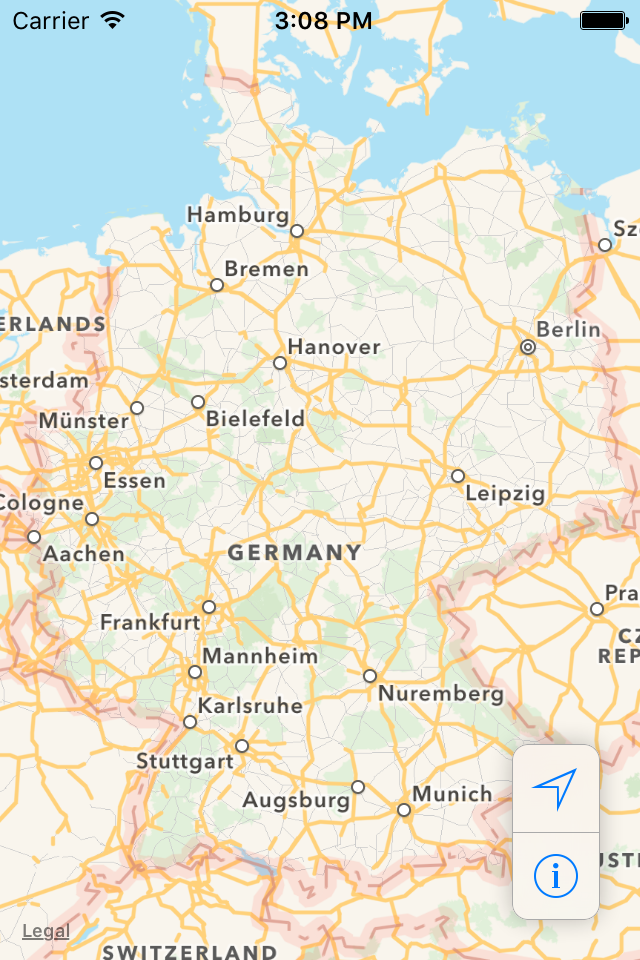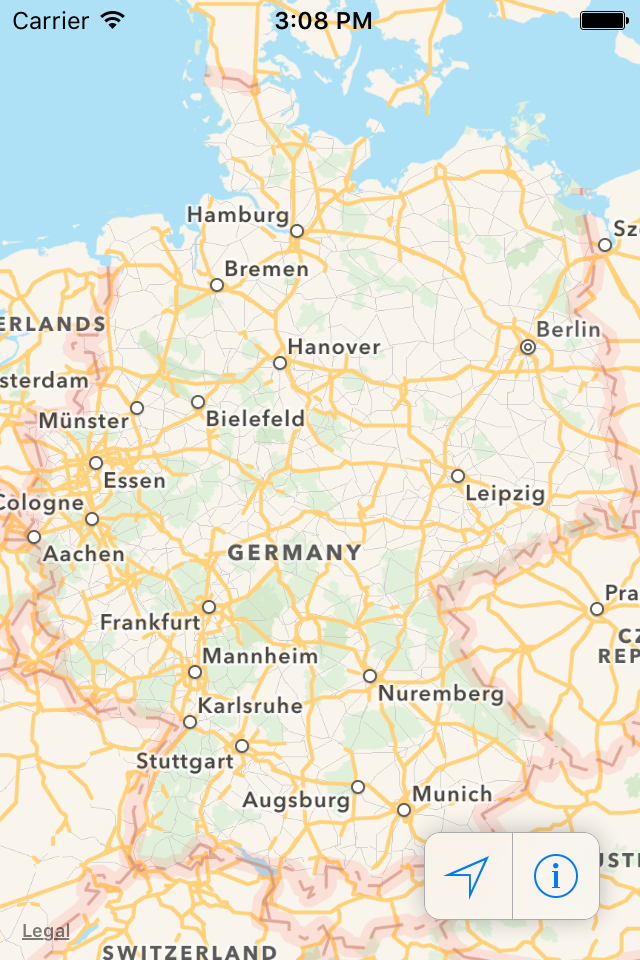ISHHoverBar 1.0.1
| TestsTested | ✓ |
| LangLanguage | Obj-CObjective C |
| License | MIT |
| ReleasedLast Release | Jul 2016 |
Maintained by Felix Lamouroux, Sebastian Hagedorn.
ISHHoverBar 1.0.1
- By
- Felix Lamouroux
- iosphere
A floating UIToolBar replacement as seen in the iOS 10 Maps app, supporting both vertical and horizontal orientation.
It is designed to hover above your content and it plays nicely with auto layout. Combine
it with ISHPullUp to create a UI resembling the
iOS 10 Maps app.
ISHHoverBarOrientationVertical |
ISHHoverBarOrientationHorizontal |
|---|---|
 |
 |
The content of the bar is set using UIBarButtonItems, just as you would configure a UIToolBar.
The bar is backed by a UIVisualEffectsView allowing you to choose from several styles.
You can customize most aspects of the view via Interface Builder.
Basic usage
Setting the bar's contents
ISHHoverBar is populated similarly to a UIToolbar using instances of
UIBarButtonItem. The content can be changed at any time by setting the items property.
The layout and intrinsicContentSize will automatically be updated.
A few limitation apply: ISHHoverBar only supports instances of UIBarButtonItem that
have a title, image, or customView (subclass of UIControl). Most importantly,
UIBarButtonItem instances created using a UIBarButtonSystemItem are not supported as
access to the underlying content is restricted to private APIs.
Appearance and orientation
ISHHoverBar supports vertical and horizontal layouts. The orientation can be changed
at any time by setting the orientation property (default is vertical). Use auto layout
to position the bar in your view hierarchy.
The following aspects of ISHHoverBar can be changed via code or Interface Builder:
- Shadow:
shadowColorshadowOpacityshadowRadius
- Corner radius:
cornerRadius - Border (also applied to separators between items):
borderWidthborderColor
- Background visual effect:
effect
General info
ISHHoverBar is written in Objective-C to allow easy integration into any iOS project
and has fully documented headers. It is annotated for easy integration into
Swift code bases.
The ISHHoverBar class and sample app have a Deployment Target of iOS 8.
Integration into your project
Dynamically-linked framework
Add the project file ISHHoverBar.xcodeproj as a subproject of your app.
Then add the framework ISHHoverBar.framework to the app's embedded binaries
(on the General tab of your app target's settings). On the Build Phases tab,
verify that the framework has also been added to the Link Binary with
Libraries phase, and that an Embed Frameworks phase has been created (unless
it existed before).
The framework can be used as a module, so you can use @import ISHHoverBar;
(Objective-C) and import ISHHoverBar (Swift) to import all public headers.
Further reading on Modules: Clang Documentation
Include files directly
Currently the project relies on a single implementation file and its header. You can include them directly into your project:
-
ISHHoverBar/ISHHoverBar.{h/m}
More OpenSource projects by iosphere
![]()
ISHPermissionKit - A polite and unified way of asking for permission on iOS
![]()
ISHPullUp - Vertical split view controller with pull up gesture as seen in the iOS 10 Maps app
TODO
- [ ] Allow changing the orientation with an animation
- [ ] Allow changing the items with an animation
